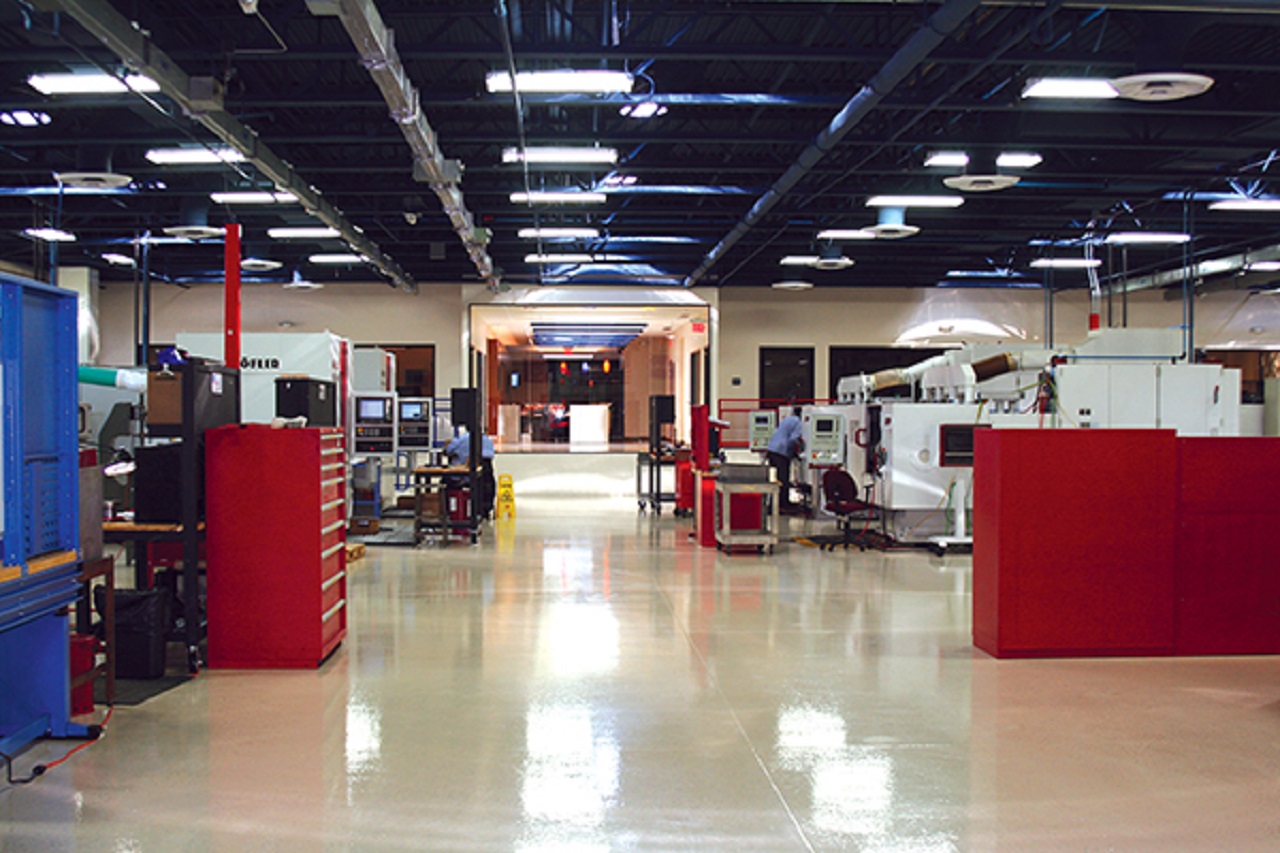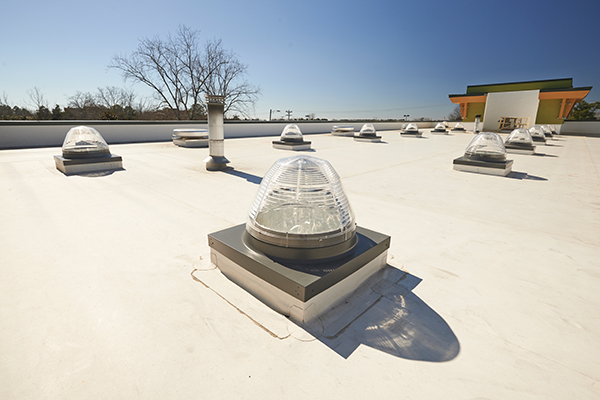Plant Gears Up With Skylights
Let there be light: a Michigan-based plant gears up with skylights. The tubular skylights give workers the light they need when working with close tolerances.
George EvansDec 12, 202338 Shares9472 Views

When Delta Gear in Livonia, Michigan, purchased an abandoned newspaper office and adjacent printing facility, energy efficiency and high levels of quality of light were major goals for the adaptive-reuse project.
Working with tolerances of microns, workers had to have adequate light to do their jobs, and visual comfort was also a consideration.
To achieve the high level of light in the facility, Delta Gear management hired general contractor Joe Hammond to install 79 Sun Tunnel skylights
They’re manufactured by Velux America Inc., in Fort Mill, South Carolina.
Sun Tunnels are tubular-shaped devices that transfer daylight through a 22-inch-diameter tunnel made of highly reflective aluminum material.
Above the tunnel on the roof is a 22-inch round, clear acrylic dome, designed to capture low-angle sunlight in the morning and evening hours, while managing the intense glare of the direct midday sun.

Tubular Skylights
The reflectivity of tubular devices is crucial because some of the photons - or light-wave energy packets - are absorbed into the interior aluminum material of the tube with each angular bounce of light and converted into heat.
However, the tunnels use an Almeco (from Lawrenceville, Georgia) specular material that is almost 100 percent reflective.
So, nearly all the daylight collected on the roof is carried into the facility as light.
In the several acoustical-ceilinged offices and conference rooms, electrically operated daylight controllers were installed on the bottom of the tunnels to dampen or completely block the light during video projection.
In the shop areas, where the majority of the tubular devices were installed, the tunnels are free hanging.
Keith Bonn, facilities manager for Delta Gear, said:
“„We did a lot of research to find out what would be the most light [sic] for the most economical price.- Keith Bonn
Bonn added:
“„But number one, it had to be OSHA rated.- Keith Bonn
OSHA (U.S. Occupational Safety and Health Administration) regulations state skylights must be guarded and capable of withstanding a load of at least 200 pounds (lbs.).
Different Roofs
Because the Delta Gear building had two different roof types, the tubular system specified needed to allow curb mount and self-flashing directly to the roof.
The manufacturer offered a curb kit as well as a self-flashed kit.
The project team investigated LEED (Leadership in Energy and Environmental Design) certification for the building but decided instead to follow the guidelines without claiming LEED credits.
Architect Lonny Zimmerman of Siegal/Tuomaala Associates from Southfield, Michigan, said:
“„We decided to use the money for LEED certification and throw the dollars into the building.- Lonny Zimmerman
Although most of the tubes installed in the building are straight, they have elbows designed to bend around unusual or difficult shapes, according to Zimmerman.
He explained:
“„We couldn’t always have a direct vertical shot down. Sometimes we had to modify it slightly and angle it. It gave us flexibility.- Lonny Zimmerman
New Facility
Much of the old newspaper printing plant’s interior was gutted before Delta Gear occupied the building, although some of the front office areas were kept.
Some offices were cleaned and carpeted, while other offices were new.
The front of the building was retained but received major modifications to the entrance.
To allow the weight of some new high-tech manufacturing equipment, part of the floor was dropped 3 feet. In other areas, the floor was raised to accommodate the added weight.
The adjacent building was knocked down and replaced with new factory space.
Transitioning to the new facility was done in stages and “went fairly well,” according to partner and co-owner Scott.
Some equipment was new and some of the existing equipment from the previous building was brought in.
Referring to the move, Scott Sakuta described it this way:
“„It was a ballet dance.- Scott Sakuta
New Roof
The roof of the new building was constructed with double-insulated EPDM rubber.
According to Hammond, installing the tubular skylights on the new roof was almost effortless.
He said:
“„It was just a matter of laying them out, cutting the deck, and dropping the tubes through.- Joe Hammond
Hammond’s roofer needed less than half an hour for each tube and another half hour to flash them.
The existing building kept the old coal-tar pitch roof, and more time was required to install the tunnels - double that of the new EPDM rubber roof.
All in all, the entire installation was well within the timeframe expected by Bonn.
He said:
“„I don’t think it took them very long. We gave them a six or eight-week window, and they were able to deliver without a problem.- Keith Bonn
Remarkable Result
The generous amount of roof space allowed architect Zimmerman, together with the HVAC team, to design the placement of the skylights on the roof, which ended up in mostly symmetrical rows.
Hammond said the daylighting tubular devices were hand-carried to the roof to avoid any potential damage to the reflective material, but that this is not atypical of other building materials he works with.
However, what he most remembered about the tubular skylights was the vast amount of light they admitted.
Hammond exclaimed:
“„The amount of light broadcast on the floor was incredible! I was shocked. I was absolutely shocked!- Joe Hammond
No Complaints
Scott Sakuta said he never hears complaints from workers about not enough light in work areas under the skylights but occasionally people do complain about it being too dark where there are only electric lights.
He further said:
“„I think the guys are energized because it’s not just fluorescent bulbs generating this unnatural spectrum. It’s worth the money.- Scott Sakuta
The eighteen-month renovation construction project of the new Delta Gear facility cost about $4.5 million.
However, the company was able to take advantage of a Detroit Edison (DTE Energy) utility company incentive program to offset some of the cost of the tubular daylighting system.
But even without the cost-incentive rebate, Keith Bonn said:
“„Daylight absolutely made a huge difference. I think it’s more than what we were hoping for.- Keith Bonn
Bonn is convinced it was the right decision.
Latest Articles
Popular Articles